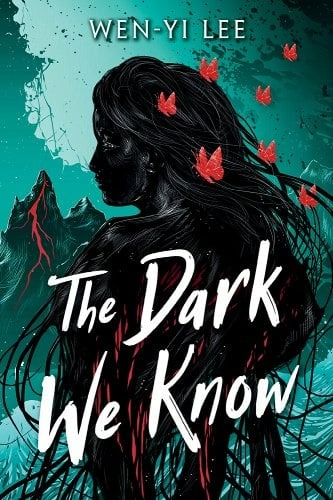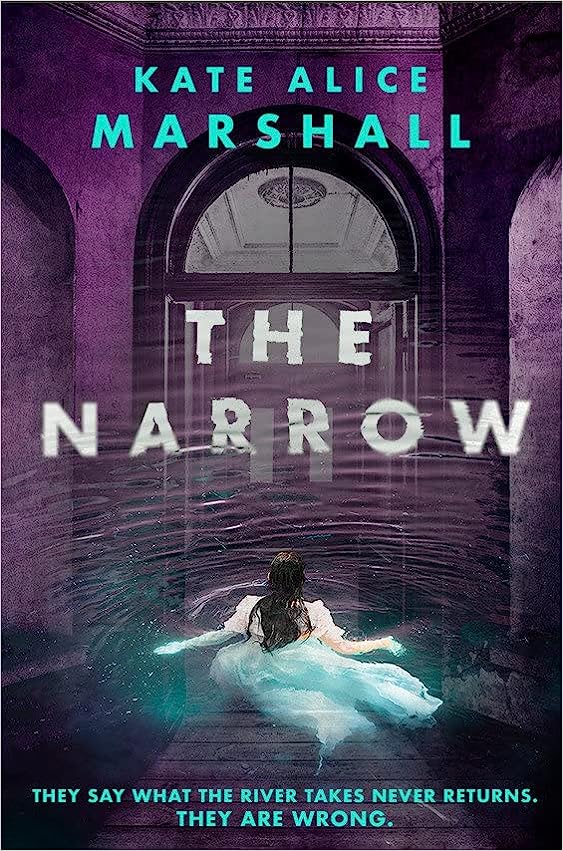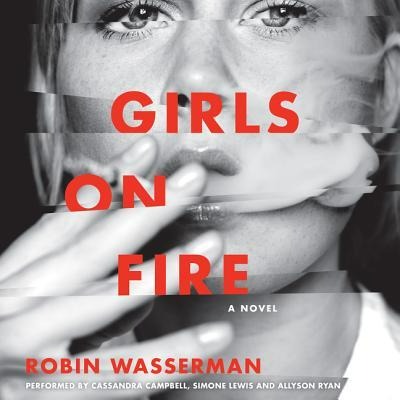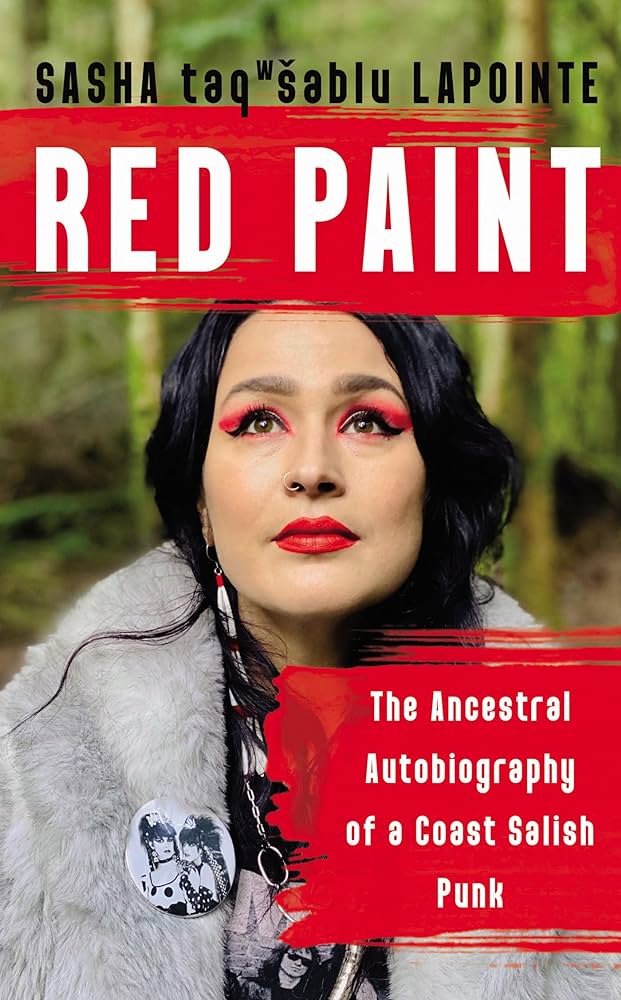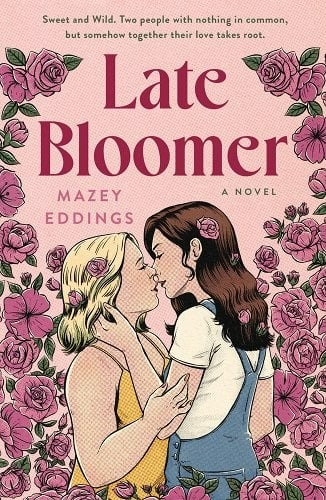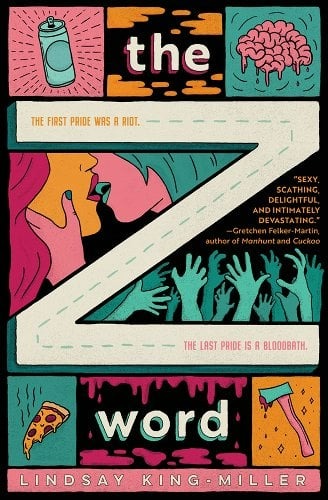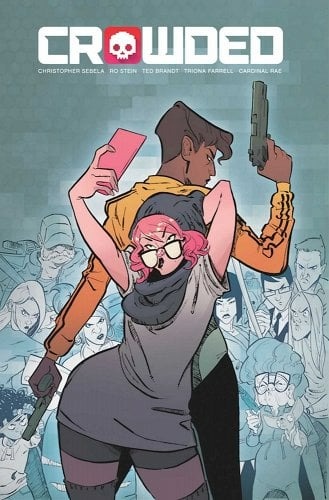Wen-yi Lee’s The Dark We Know follows Isadora Chang, an art student who left her small hometown after the deaths of two of her best friends. Two years later, she returns for the funeral of her abusive father, where she encounters her last surviving friend, Mason. Mason tells her that he suspects their friends were in fact murderedRead More
A Very Queer Gothic Ghost Story: The Narrow by Kate Alice Marshall
When I got a promotional email about this book, I asked the publisher if there was a queer main character, because I couldn’t tell from the description. It’s funny that I had to clarify, because this is a very queer book: the main character is bisexual, there’s an F/F romance, and there are several queerRead More
How Much Would You Sacrifice for Fame?: Every Time You Hear That Song by Jenna Voris
Buy this from Bookshop.org to support local bookstores and the Lesbrary! I won’t be able to get through this review without mentioning The Seven Husbands of Evelyn Hugo, so let me get the comparison out of the way now. Like Evelyn Hugo, this cover likely doesn’t scream “queer story,” but it is—twice over, actually. LikeRead More
An Obsessive Female Friendship Turns Dark: Girls on Fire by Robin Wasserman
Buy this from Bookshop.org to support local bookstores and the Lesbrary! Two teen girls, Hannah Dexter and Lacey Champlain, become obsessively attached to each other in their rebellion and vengeful agenda against Nikki Drummond. Then dark secrets about what happened to Craig, the boy found dead at the beginning of the novel, begin to unravel,Read More
Memoir of a Queer Coast Salish Punk: Red Paint by Sasha taqʷšəblu LaPointe
Buy this from Bookshop.org to support local bookstores and the Lesbrary! “I no longer wish to be called resilient. Call me reckless, impatient, and emotional. Even Indigenous. Call my anything other than survivor. I am so many more things than brave.” One of my favourite books I’ve read this year is Thunder Song, LaPointe’s newestRead More
A Lush Bisexual Vampire Gothic: Thirst by Marina Yuszczuk
Buy this from Bookshop.org to support local bookstores and the Lesbrary! Thirst by Marina Yuszczuk, originally published in 2020 and translated this year by Heather Cleary, is a dramatic and lushly gothic novel about two women who a string of circumstances going back over a century bring together in modern day Buenos Aires. Yuszczuk revelsRead More
A Belated Bi Awakening: Imogen, Obviously by Becky Albertalli
Buy this from Bookshop.org to support local bookstores and the Lesbrary! Imogen Scott has endless experience as a straight queer ally. Her friends are pan and bi, her sister is out, and she never misses a Pride Alliance meeting. While visiting her best friend Lili at college, who has her own little queer community, ImogenRead More
A Blossoming, Neurodiverse Love: Late Bloomer by Mazey Eddings
Buy this from Bookshop.org to support local bookstores and the Lesbrary! After winning the lottery, Opal Devlin puts all her money in a failing flower farm, only to find an angry (albeit gorgeous) Pepper Boden already living there. Though she’s unable to find her grandmother’s will, Pepper claims she’s the rightful owner of Thistle andRead More
A Zombie Invasion at Pride Novel Doesn’t Nail the Landing: The Z Word by Lindsay King-Miller
Buy this from Bookshop.org to support local bookstores and the Lesbrary! I was so excited to pick this up. I read Eat Your Heart Out by Dayna Ingram more than 10 years ago (!) and I’ve been searching for a similar fun and gory sapphic zombie adventure ever since. At first, I thought I’d foundRead More
Murder by Crowdfunding: Crowded Vol. 1 by Christopher Sebela et al.
Buy this from Bookshop.org to support local bookstores and the Lesbrary! The Crowded comic book series tells the satirical story of a dystopian world not too far in the future where the gig economy has become unhinged. In this world, everything has a price, including putting out hits on someone’s life through an app called Reapr. AnyoneRead More
- « Previous Page
- 1
- 2
- 3
- 4
- …
- 21
- Next Page »
